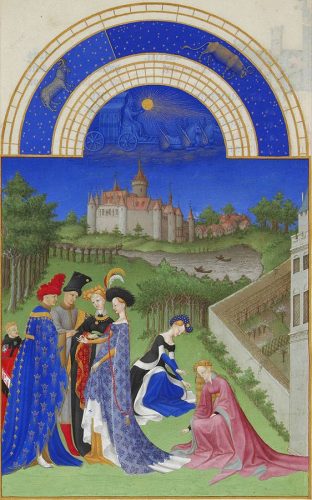Savoring the pleasure of the world is a teaching of Judaism that is embedded in the minds of the Jewish people. Too much materialism, however, has generally been established as something that leads to negative and damaging things. In contrast to this notion, Judaism teaches that with the proper attitude and usage of the physical world, holiness can be obtained.

Denying the physical will not enable one to achieve holiness. Instead, the Jews are taught that holiness comes from elevating the physical. It includes Kiddushin, or simply marriage.
Below are some interesting facts about Jewish marriages, the event that brings a man and a woman together, which you may not be aware of:
- Chuppah
The chuppah is a canopy that covers the bride and groom during the wedding ceremonies. The wedding is held under an open sky, and the chuppah signifies the open home of the bride and the groom which they are planning to build together in the future.
- The Ring
The wedding band is an essential element of Jewish weddings. It is because the marriage will not take effect without the groom slipping the simple gold band on his bride’s finger.
Dario Maestripieri Ph.D. describes the wedding ring, “It’s a signal meant to inform others that the person who wears the ring is married and already committed to a relationship.

- Ketubah
The ketubah, or the marriage contract, list the husband’s duties to his wife as her partner. It includes emotional, conjugal and material obligations. It also explains the compensation that the bride will receive in case of her husband’s death, or in the event of divorce. “The Jewish wedding contract (ketubah) has a remarkably dynamic history, conceived in turn as a legal contract, a museum artifact, and a domestic artwork,” Jeffrey Shandler, PhD explains.
- Nisuin
The act of nisuin finalizes the marriage. In this act, the wife showcases her status as a bride. Several occasions express the nisuin, including standing under the chuppah, the bride and groom being alone as a couple, and the bride wearing a veil.
“The second ceremony, called Nisuin, includes seven special blessings for marriage that are recited for the couple,” Andrea Lieber, Ph.D. wrote.
- Smashed Glass
The groom shattering glass with his foot concludes the ceremony. This action is a reminder of the ruined Holy Temple and fractured nation. It symbolizes that despite our happiest moments, the world remains imperfect.
- Tallit
A tallit is a prayer shawl that is traditionally gifted by the bride to her groom. The groom may wear it during the wedding ceremony under the chuppah, and it may also be draped over both the bride and groom during the wedding.
- Big Feast
During the wedding feast, extra table, chairs, and food are a traditional practice. It aims to make people more comfortable in joining the celebration of the wedding.
- Big Bread
To officially start the feast, it is a traditional practice for the groom to recite the Hamotzi blessing over a big braided challah bread.
- Two Souls Into One
This fact may be a familiar concept to many. The Kabbalists teach that bride and groom form, one soul. They are the other halves of one soul. When the wedding commences, and they are joined together as husband and wife, they finally become one.
- Yom Kippur
One’s wedding day can be considered as one’s Yom Kippur. In Yom Kippur, all sins committed by a person is forgiven. Many Jews follow the custom of fasting during this special day.

Knowing these ten facts about Jewish marriages will help you to prepare yourself if you will be attending one soon. Moreover, you can also keep them in mind if you will be wedded in the near future.